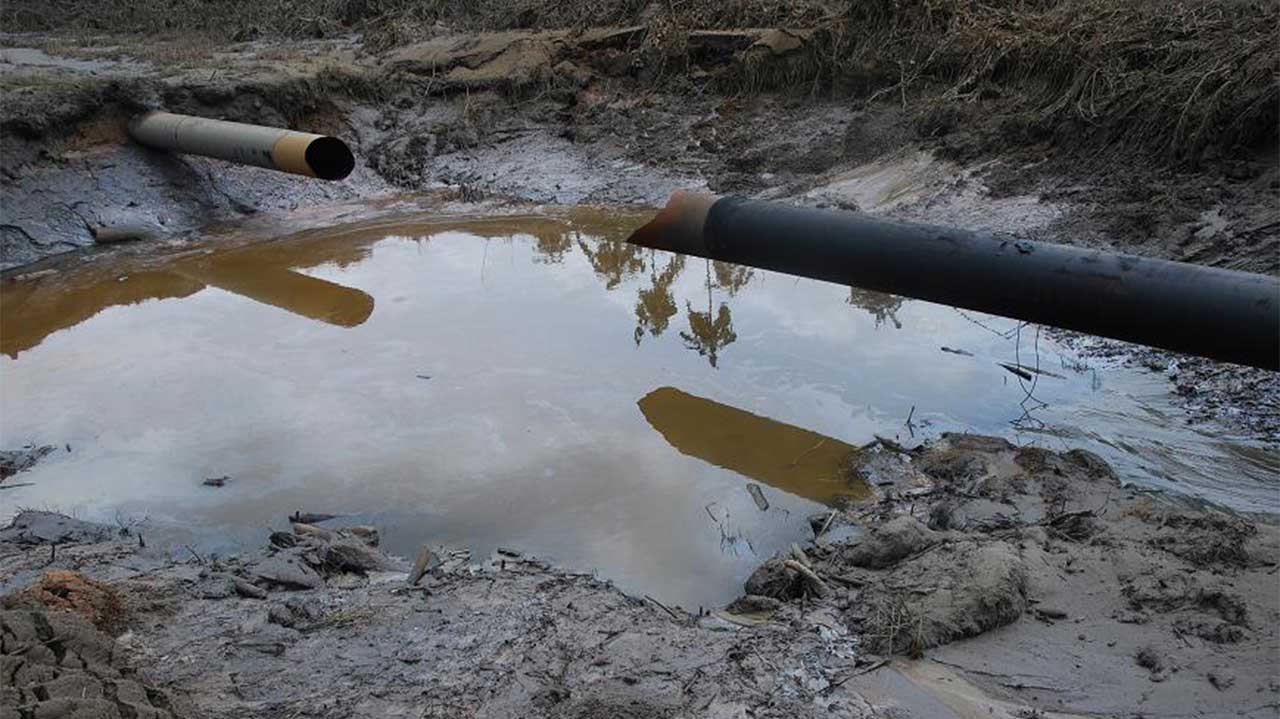• CEO, Benny Peters Assures Affected Communities of Speed, Ecosystem Protection.
Two weeks after a non-producing wellhead in the NembeLocal Government Area of Bayelsa State leaked and is still spewing its contents, the operators of the NNPC/Aiteo Joint Venture of Oil Mining Lease (OML) 29, Aiteo Eastern Exploration and Production Co. (AEEPCo), have announced several proactive measures to combat and contain the spill.
The wellhead, located in the Santa Barbara Southwest field in Nembe LGA, was, according to AITEO, predominantly dormant. The leak started on November 5. According to Ndiana Mathew, spokesperson for AITEO, said that upon noticing the leak, “Aiteo notified all relevant regulatory agencies and, thereafter, mobilised containment resources to limit the impact on the environment. As required, Aiteo promptly called for a Joint Inspection Visit (JIV). Due to the high-pressure effusion, the JIV team could not reach the location and that inspection was aborted.”
“Since then, Aiteo has activated an elaborate and extensive spillage containment response in the internationally prescribed manner. Though spills of this nature are not uncommon to the oil and gas industry, their resolution requires expert skill and equipment that is not routinely or readily available. The typical process is to first kill the well and stop the leak and then focus on the clean-up.”
Mathew said further that aside from the urgent possible technical responses to contain the leak, Aiteo has sought, become involved with and is now in active collaboration with Clean Nigeria Associates (CNA) which has since mobilised to site in addition to Aiteo internal resources to reinforce containment and recovery efforts. CNA is the oil and gas industry non-profit umbrella body with expertise and resources to contain spills of this nature. Because it was causing growing anxiety among the local communities that rely on the surrounding land and waterways, the area has been cordoned off and the CNA is mobilising additional resources to strengthen the containment effort.
It was gathered that a well-killing assessment site visit has been carried out to evaluate the assets and earmark the resources required to bring the effusion under control. The required apparatus including heavy-duty and specialist equipment are presently being mobilized, locally and internationally, on a fast-track basis, to bring the well under control. For this purpose, “Aiteo has on-boarded the involvement of the renowned Boots & Coots, arguably the leading well control company in the world, working with a local resource. Upon this intervention and conclusion, it is expected that the persistence of the leak alongside its functional consequences will be abated and significantly diminished,” Mathew stated.
Also, senior personnel of AITEO have visited the affected communities and made available, for the use of the communities, relief materials aimed at ameliorating the direct consequences of the incident. At Opu-Nembe Kingdom where the Aiteo delegation was received by the traditional ruler, His Royal Majesty, Dr Biobelemoye Josiah Ogbodo VIII, his council of chiefs and foremost indigenes and government officials, the King said, “We are happy that Aiteo has initiated this visit to support the community at this time and urge it to continue to work with us as partners in progress on its corporate goals in the community.”
Similarly, the Aiteo Group CEO, Mr Benedict Peters, has extended his assurances to the affected communities affirming, “We are doing everything in our power to contain this spill and ameliorate the situation as rapidly, safely and responsibly as possible. We have mobilized best-in-class resources and expertise to put this mishap behind us. Be rest assured of our resolve to limit the escape of oil and protect the ecosystem from its effects.”
In the statement signed by Mathew, the company averred that it remains committed to ensuring immediately that the circumstances are brought under better control and ascertaining the immediate and remote causes of the leak.
Furthermore, “It is important that we affirm our preliminary view based on our assessment of the proximate circumstances that it will be difficult to exclude deliberate tampering of the well by oil thieves attempting to siphon crude directly from the wellhead. In our view, sabotage remains the most imminent cause of this incident,” the company stated.
“Oil theft and asset vandalism continue to present the biggest challenge we face in the operations of oil and gas production in the Niger Delta area. It has continued to damage the production profile of oil producers in so many ways.
As we commend the relevant security agencies with whom we interface to combat this menace, we believe the need and capacity to provide significantly more remain overwhelmingly critical especially because there is so much more to be done to realign the architecture of the delivery infrastructure of oil and gas production in Nigeria in line with the current industry structure of multiple producers operating assets that were previously built and managed by one producer.”
The company reiterated that it feels deeply concerned about the incident and that the circumstances and fortunes of the immediate community remain its most anxious consideration, which it stated had assumed the highest priority alongside making safe the well and its immediate environs.
“It is our fervent desire that in the attainment of this intensely challenging objective, the interests of the proximate community continue to be safeguarded in every material respect by the collective efforts of our company and all the industry professionals whose involvement Aiteo has convoked,” the statement concluded.

 Naira4 weeks ago
Naira4 weeks ago
 Naira4 weeks ago
Naira4 weeks ago


 Naira4 weeks ago
Naira4 weeks ago




 Naira3 weeks ago
Naira3 weeks ago
 Commodities4 weeks ago
Commodities4 weeks ago


 News4 weeks ago
News4 weeks ago


 Banking Sector4 weeks ago
Banking Sector4 weeks ago
 Travel4 weeks ago
Travel4 weeks ago
























